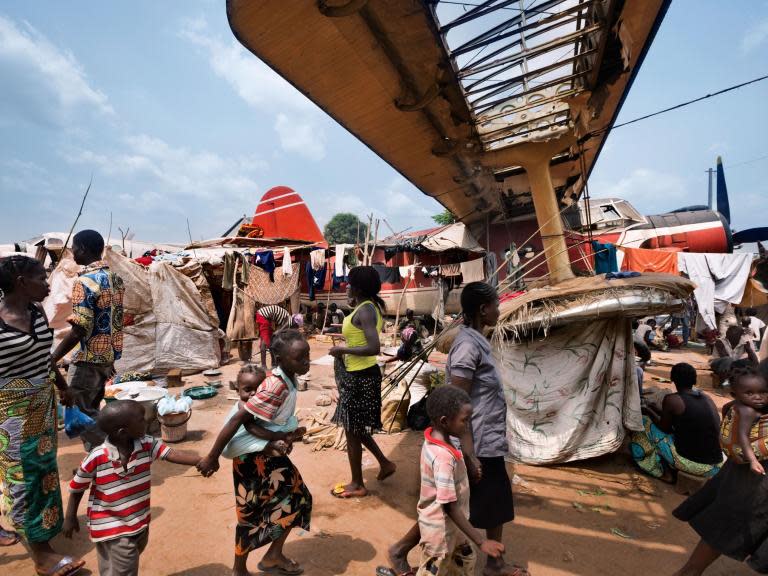How the Central African Republic is trying to get back on its feet after years of instability
Beset with instability and sporadic violence since its independence from colonial occupier France in 1960, the Central African Republic was plunged into its most recent turmoil after a violent coup in 2013.
In March of that year, Seleka rebels pushed out President Francois Bozize, and in the ensuing conflict between the mainly Muslim Seleka group and the largely Christian anti-Balaka militia, hundreds of civilians were killed.
And while a tentative ceasefire in 2014 ushered in a degree of calm, tensions prevail, and “outside of the capital Bangui, most of the country is in the hands of armed groups,” according to the International Crisis Group.
While one part of the country might seem peaceful, violence can flare elsewhere, says Ben Bartlett, programmes operation coordinator for CAR at the NGO War Child.
“It can change on a daily, hourly basis. You have different hotspots across the country.”
Years of conflict have forced much of the population from their homes, with over 700,000 people living as Internally Displaced Persons (IDP), and a further half a million living as refugees in neighbouring countries. Rape and sexual violence are also routinely used as a weapon of war by parties to the conflict, and according to the UN, 2.9 million people – representing 64 per cent of the total population – require humanitarian assistance.
The unpredictability of fighting between militias means that families can never know for certain if it’s safe to return home.
Asides from all the usual challenges that face IDP and refugee populations around the world, often living in densely populated centres, under harsh conditions, and with limited access to opportunities, health care, and sanitation, the camps in CAR are also hard to access, says Bartlett.
The Central African Republic is not one of those ‘sexy’ crises
Ben Bartlett, War Child's programmes operation coordinator for CAR
“It’s a real challenge in the CAR, particularly because of security considerations, and lack of access,” he says.
This year alone, six aid workers have been killed in the country, and 24 in total since 2014.
On top of logistical difficulties, there are also severe funding issues.
“CAR is not one of those ‘sexy’ crises,” Bartlett laments, NGO-speak for those conflicts or emergencies which are more likely to attract news coverage and subsequent funding.
For this year thus far, the 2018 response plan is only 36 per cent funded, thus illustrating, with only a few months left of the year, how much more money is needed to meet basic humanitarian needs.
“Governments and funding bodies don’t see sub-Saharan and Central Africa as response priorities,” Bartlett says, as these are often countries where conflict has been dragging on for years or even decades and they represent a perceived lack of political importance.
And while there are ongoing peace initiatives, such as one sponsored by the African Union, myriad obstacles remain. The mandate of the UN peacekeeping force in CAR, MINUSCA, is set to expire in November.
But despite the challenges on the ground, War Child, alongside other organisations, operates in CAR, with around 40 aid workers supporting their programmes there.
The Independent met staff and children at its VoiceMore programme in Bangui, where Stephanie, who once had to flee her home amid tribal violence, is now receiving educational support form War Child.
War Child’s country director in CAR, Eric Mamboue, says he is grateful for what The Independent’s Learn to Live campaign has already done to help him and his charges.
“Many children when they arrive here will not even speak,” he said of his charges. “You see them standing alone. But they must not focus on what they lived through but their hopes for a brighter future so they can become the engineers, the doctors, that are needed. Let’s now open their eyes to all that is possible for them to achieve.”

 Yahoo News
Yahoo News 

